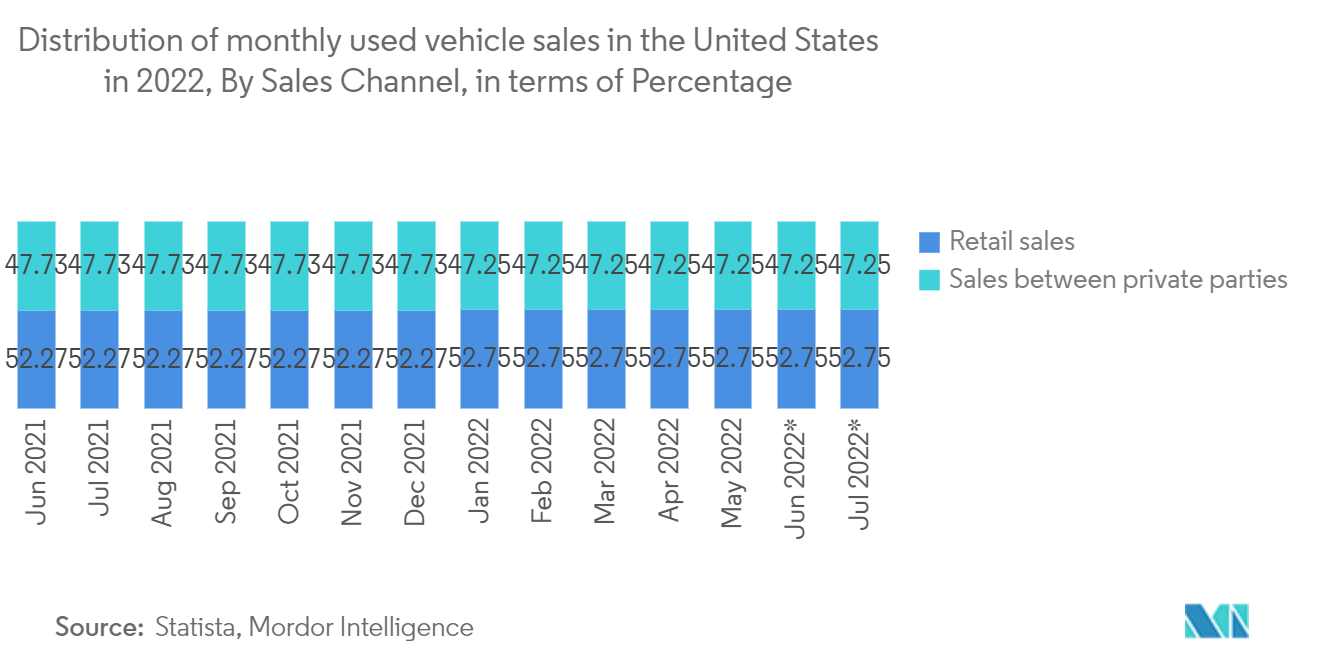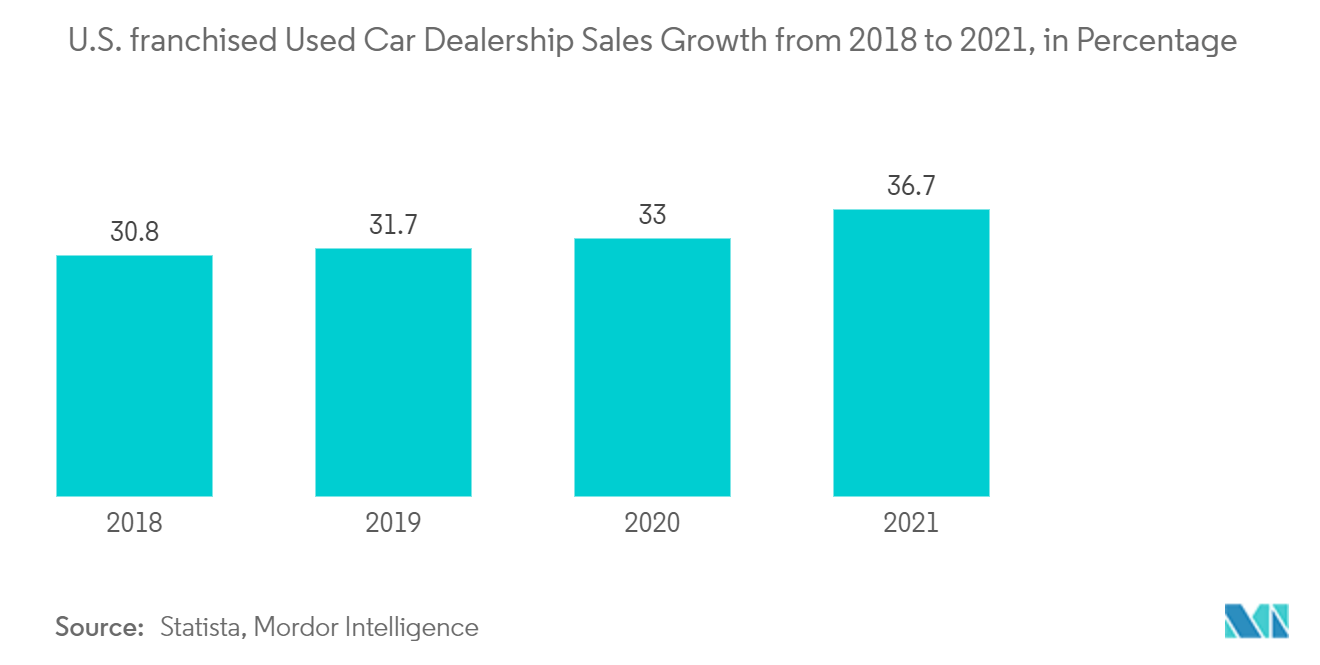Market Trends of United States Automotive Dealership Industry
This section covers the major market trends shaping the US Automotive Dealership Market according to our research experts:
Rising Focus of Automotive Dealers on Enhancing Consumer Experience and Dealer Network to Drive Demand
The automotive and mobility industries have certainly been among the hardest hit during the COVID-19 pandemic. However, as restrictions ease across the country, vehicle dealerships are becoming busier, and many are eager to buy more inventory. Several consumers have started to choose personal transportation over public transportation as a result of the pandemic, which spurred opportunities for dealers who are most inclined to offer financial services for new and used vehicles. Thus, with a variety of financing options available in the country, the dealership network is expected to flourish in the coming years.
For original equipment manufacturers (OEMs), car dealers remain a vital link in the chain, holding the keys to local and meaningful customer interaction and playing a crucial role in the aftermarket and ongoing consumer interaction. Over the last decade, large dealership networks have been able to maintain margins and build the scale necessary to invest and adapt.
For instance, in November 2022, Kia announced the launch of the revised 2023 Telluride SUV as it makes its way to dealerships across the United States. The 2023 Telluride builds upon the success of the original with two new rugged trim levels (X-Line and X-Pro) that help the Telluride track further through urban, suburban, off-road, and ranch-style landscapes.
As a result of such an optimistic environment, companies are focusing on meeting the expectations of authorized and unauthorized dealers and making themselves available to provide custom solutions. For instance, in March 2021, HGreg.com, one of the fastest-growing automotive groups in North America, acquired Buena Park Nissan and Puente Hills Nissan, two established car retailers located in the Greater Los Angeles area. The acquisition enables HGreg.com to continue its growth plans for the West Coast, expand its inventory of quality pre-owned vehicles, and, ultimately, offer the omnichannel car buying journey that it has committed to streamlining.
In addition, growing electric mobility and the fast adoption of new technologically equipped vehicles are expected to create an optimistic environment in the market. Such trends in the market pose a positive outlook for demand over the coming years.

Rising Used Car Sales Expected to Augment Market Growth in the Next Five Years
Due to unprecedented circumstances, such as global semiconductor shortages and supply chain disruptions in the wake of the ongoing Russia-Ukraine war, used cars are gaining popularity in the United States. This has impacted new car sales, reducing the positive outlook for used vehicles in the country. In addition, the inability of customers to buy new cars became one of the reasons for the growing used car sales volume, which is complemented by the investments made by industry participants to establish their dealership network in the market. These dealership networks helped market participants to brand and make used car options viable.
For instance, used vehicles accounted for around 36.7% of sales generated by franchised car dealerships in 2021, up from about 33% the previous year. The contribution of new vehicles fell from 55% in 2020 to 52.2% in 2021. This shift toward used vehicles is linked to the rising price of new vehicles in the United States.
Further, factors such as affordability, the availability of used cars, and the requirement for personal mobility, are expected to help dealers operating in the United States to emerge in the coming years. For instance, in October 2021, used car dealer CarLotz announced that it expanded North Texas with a new hub in Plano. This marks its first location in the metro area and second in the state as part of its expansion plans. The company has 20 retail locations across California, Colorado, Florida, Georgia, Illinois, Missouri, North Carolina, Tennessee, Texas, Virginia, and Washington. Other retail locations are planned for Alabama and Nevada by the end of 2022.
Various leading companies have set up online and offline stores to offer seamless used car buying experiences. For instance, in September 2020, AutoNation Inc. expanded its pre-owned vehicle store and opened two new stores in the USA Denver market. The organization also announced its goal to open 130 AutoNation Inc. stores by 2026. Such developments and trends are expected to enhance the overall growth of the market in the coming years.

